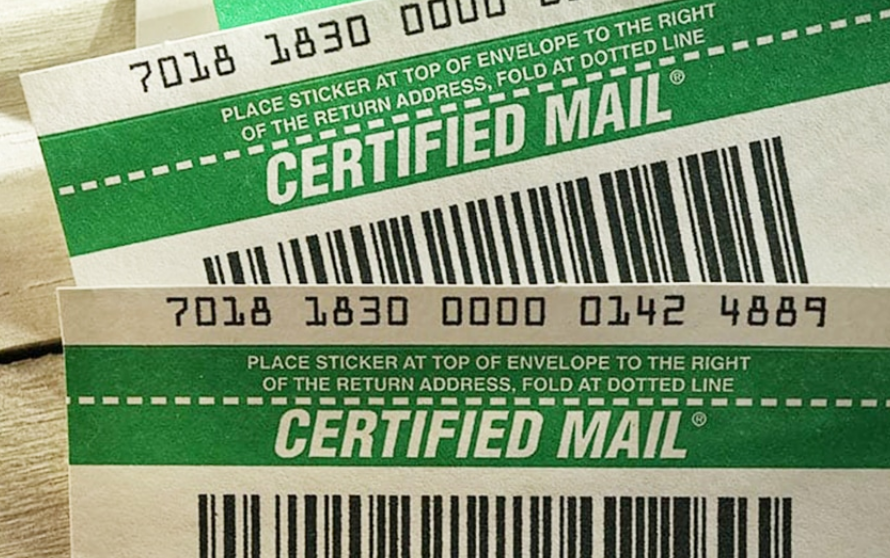Need to Serve a Mechanic’s Lien on an Out-of-State Party? According to One Case, You Should Serve the Lien via Certified Mail with Return Receipt Requested
If a mechanic’s lien needs to be served upon an out-of-state party, how should the lien be served? Is it enough to simply drop it in the mail? Should it be sent certified mail? How about by courier? A recent appeal before the Pennsylvania court determined the Pennsylvania mechanic’s lien should have been served upon the owner in California via certified mail with return receipt requested.
General Contractor Hired for Renovations
The general contractor was hired by the owner to renovate property in Pennsylvania. The GC provided services between December 2014 and July 2015. However, the owner filed disputes and claims against the GC, which prevented payment to the GC. In turn, the GC filed a mechanic’s lien in the amount of $61,000.
General Contractor Mails a Copy of the Lien
The GC filed his lien after having sent the notice of filing the lien on the same day, December 16, 2015. On January 26, 2016, the GC filed an affidavit stating the owner was served with a copy of the lien at a California address, via regular first-class mail on December 18 and via certified mail with return receipt requested on December 21.
On February 8, 2016, the GC filed another affidavit stating the certified mail was returned as “unclaimed.” The GC also stated the lien was sent again on February 8, and claimed the lien was served via email on December 16. This gets a bit confusing, because the GC’s various affidavits reference dates out of order, so here it is in chronological order:
- December 16, 2015: GC files its lien, claims it notifies the owner of the lien via email
- December 18, 2015: GC serves the lien via first-class mail
- December 21, 2015: GC serves the lien via certified mail, with return receipt requested — subsequently the mail is returned as “unclaimed”.
I Knew, But I Didn’t Know
The owner claimed it did not receive notification of the lien, making the GC’s lien invalid. HOWEVER, January 28, 2016, the owner filed an emergency motion to release the lien. In other words, “I did know about the lien, that’s why I filed a motion to have it released. But, my argument to the court is the GC failed to comply with statute, which makes the lien invalid.” While that is not a quote from the case, imagine with me, that’s what the owner said.
The court granted the discharge request, so long as $61,000 (to cover the amount of the lien) was deposited in escrow. And ultimately, the court dismissed the GC’s lien for failure to comply with statute.
But what kind of story would this be, if it just ended there? The GC filed an appeal.
On Appeal, Failure to Comply = No Lien
The appeal ended with the same verdict as the initial trial: the GC failed to comply with the statutory requirements. According to the court opinion, here’s the statutory requirement –
The Mechanics’ Lien Law of 1963 states that (1) written notice of the lien must be served within one month after filing, (2) an affidavit of service must be filed within 20 days after service, and (3) failure to serve the notice or to file the affidavit is grounds for striking the claim. 49 P.S. § 1502(a)(2). The statute further requires that service of the notice of filing be made in the same matter as a writ of summons in assumpsit or by posting. 49 P.S. § 1502(c).
But the owner lives in California, not Pennsylvania, does that matter? The court stated, because the owner is out of state “service upon (owner) is complete upon delivery of mail ‘where a copy of the process [is] mailed to the defendant by any form of mail requiring a receipt signed by the defendant or his authorized agent.’”
OK, but the certified mail was returned as “unclaimed” does that count as substantial compliance? Nope. Per the court, if the certified mail had been returned as “refused” then the GC could have met the statutory requirements by serving the document via first-class mail. So, two things: 1. The certified mail was not refused, it was unclaimed. and 2. The GC served the document via first-class mail BEFORE it was sent certified.
Not to mention, the GC filed its affidavit more than 20 days after the filing of the lien – but that point seemed moot based on the court’s determination that improper service of the document was enough to invalidate the lien.
What Should the GC Have Done?
First, the GC should have better managed the lien deadlines. The GC’s affidavit was late, because it was served more than 20 days after the lien filing. Second, the GC should have initially served the lien in accordance with statute – certified with return receipt requested or personal service. If certified mail had been refused, the GC would have maintained statutory compliance if it had then served the document via first class mail.
You can access the text for this case here.
